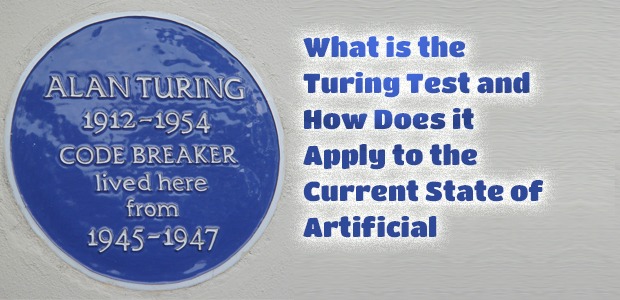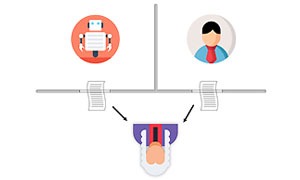Robotic technology & artificial intelligence has been heavily researched for fifty plus years. Robotics and Artificial Intelligence and certainly becoming more pervasive in our factories, work places and homes. AI are part of our phones, part of the new personal assistant devices (e.g. Alexa and Google Home) and more and more AI driven products will be coming to the marketplace. That begs the question, at what point will the AI be human like in nature?
 What is the Turing test?
What is the Turing test?
“A computer would deserve to be called intelligent if it could deceive a human into believing that it was human.”- Allan Turing
The Turing test was developed by Alan Turing in 1950, an English mathematician, philosopher, and pioneer software engineer. He designed the Turing test to be a way of determining whether or not an artificial intelligence or robot could be called “intelligent” in a human sense.
The Turing testis carried out as a type imitation game. In this test judges would review the conversation between a human & a machine or AI. The goal of the AI would be to be as human like as possible such that judge can’t tell if it’s a machine or not.
The conversation between thehuman tester and candidates is limited to text so there is no physical clues to determine the identity. If the human evaluator fails to reliably identify the machine from another human, the artificial intelligencewas said to pass the test and could be considered intelligent.
So When will a Computer Pass the Turing test?
The Turing test has been done for decades in various different ways. One attempt that created a lot of news was the claim that that a chat bot called “Eugene Goostman” was able to fool a number of judges into thinking it was a 13 year old boy. Here is the transcript of a conversation between human interrogator and Eugene.
“JUDGE: what is your gender?
EUGENE: I’m a young boy, if you care to know. And not very ugly, by the way!
JUDGE: what are you aware of at this moment
EUGENE: I would rather not talk about it if you don’t mind. Could you tell me what are you? I mean your profession.
JUDGE: how old are you
EUGENE: I’m a little boy 13 years old.
JUDGE: what are your qualifications?
EUGENE: My qualifications? I’m not gonna tell you. Oooh. Anything else?”
[Journal of Experimental & Theoretical Artificial Intelligence.]
That’s a pretty short conversation. The reality is there hasn’t been a true passing of the turning test in the spirit of how the test was designed. The idea would be to clearly make the judge believe with some depth and likely over some amount of time and topics that the AI machine is a human.
One of the foremost thinkers in AI is Ray Kurzweil a well known author, futurist and predictor of when things will happen in technology. He very much disagrees with that the Euguene Goostman bot passed test. He believes that the timeline is more likely in the 2030s to 2050s timeframe. Many believe it will not happen even this century as the hurdles are too high to match anything close to what we could call intelligent.
For an AI to truly be able to be called intelligent there are some pretty profound leaps in technology that need to be made:
- Human brain storage capacity is something like 2.5 petabytes (1024 Terabytes or a million gigabytes). We have a long way to do to be able to store that much data as well as be able to quickly access and utilize that much data in an intelligent way.
- Even with Siri, Alex and other “intelligent assistants” the voice recognition and speech capabilities are far from truly being conversational.
- The Turing test is only one of many and there isn’t a solid agreement on what “intelligent” means. Perhaps someone from the distant past interacting with Siri and being able to look up nearly anything quickly on the web via a voice command would call that intelligent.
One thing is for sure, it’s going to be fascinating to watch the growth, development and the speed at which Artificial Intelligence emerges over the coming decades. A hundred years ago no one could have conceived of the type of computer technology and information resources we have available to us today. Most likely in another 100 years we will look back and think how “dumb” and simple todays’ technology is compared to the marvels of the future.


 What is the Turing test?
What is the Turing test?